Price: £356.00
Aperture: 90mm
Focal Length: 500mm
Eyepieces: 26mm Plössl eyepiece
Finderscope: 6x30 finderscope
Weight: 2kg
Supplier: Telescope House
Telephone: 01342 837098
Website: www.telescopehouse.com
Deep-sky astrophotography is becoming ever more popular among amateur astronomers and many observers dip their toes into the hobby using a camera on their telescope and mount.
It soon becomes apparent, though, that taking stunning, long-exposure photographs requires some extra equipment and a process known as ‘auto-guiding’.
Taking that next step has been easier thanks to the introduction of Bresser’s new AR90/500 guiding kit, which aims to provide a simple, everything-in-the-box solution to auto-guiding.
In simple terms, auto-guiding is a method of ensuring that a telescope remains pointed precisely at an object being observed, following it as it moves across the sky.
Even very expensive mounts can benefit from automatic guidance, as several factors influence how well a mount will hold steady on its target and enable you to take long-exposure pictures that aren’t spoiled by star trails.
The AR90/500 consists of a 90mm achromatic telescope with a focal length of 500mm, a 6x30 optical finderscope, a Bresser GPCMOS02000KPA colour guide camera, a 26mm Plössl eyepiece, a 1.25-inch diagonal, a universal clamp, a tube clamp, cables, a soft bag and ToupSky imaging software.
The 90mm telescope is firmly attached to the main setup and acts as a separate ‘guidescope’.
The little camera on the guidescope is focused on a star near your photographic target, and it relays information via a laptop or PC to keep your mount locked onto your desired object.
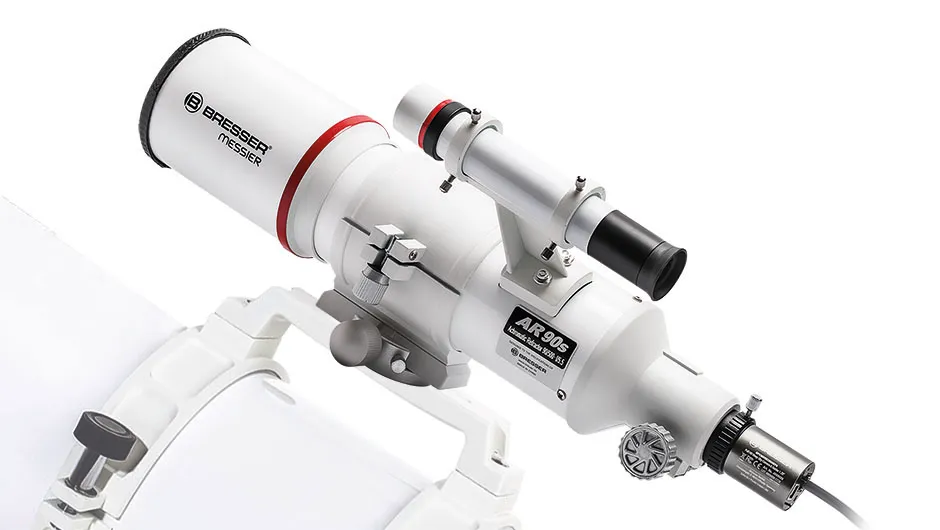
Keeping things light
We were pleased to see, then, that the 90mm telescope in this kit is lightweight.
In fact, the whole assembly only added around 2kg to our telescope and camera rig.
In general, the less weight a mount has to carry, the more accurate it will be.
Having decided to mount the AR90/500 on top of our setup, we used the supplied bolts and clamp, attached to our own rail, to hold the Vixen-style dovetail in place.
Although the guidescope was not perfectly aligned with the main telescope, and there’s no method of adjusting the alignment once the clamp is in place, it was close enough for our purposes.
Finding a rough focus position is made easier by using the kit’s basic 26mm Plössl eyepiece, which we then swapped for the guide camera itself.
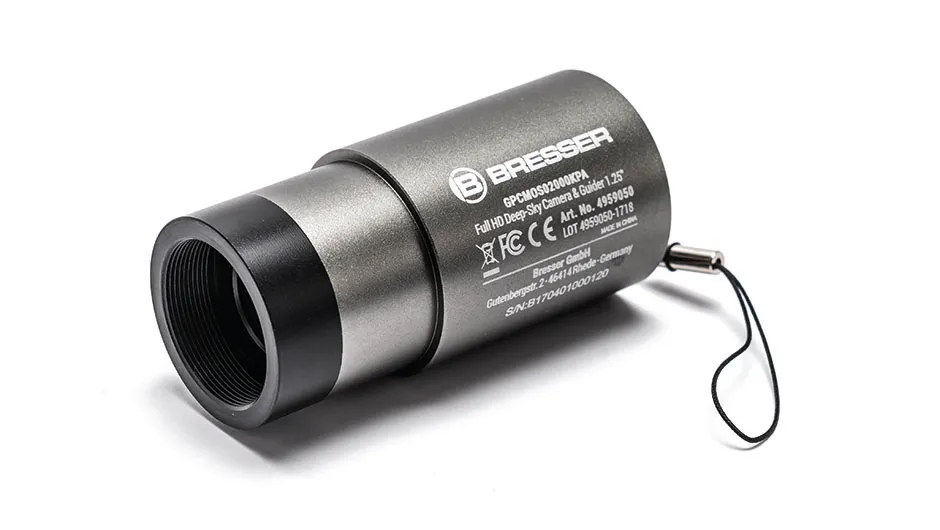
It would have been preferable if the camera could have been used straight through, but we found that it’s only possible to focus the guide camera if the included 1.25-inch diagonal mirror is used.
Setup was fairly quick because of our experience with auto-guiding, but newcomers may be frustrated by the lack of useful instructions.
Having installed the camera software from the accompanying CD, we were pleased to see that the camera was immediately recognised in PHD2, our preferred auto-guiding software, although the camera is compatible with all major auto-guiding software packages.
Ready to go, we slewed to our first target, the Rosette Nebula near Orion.
Right away we were presented with a choice of stars to guide on, picked out by the sensitive little camera.
It’s worth mentioning that each star had a slight halo, which we believe is the result of using a colour camera on an achromatic telescope.
This does not affect the guiding software, though, and soon our first five-minute test exposure was underway.
When we checked the star shapes, they were tight and round.
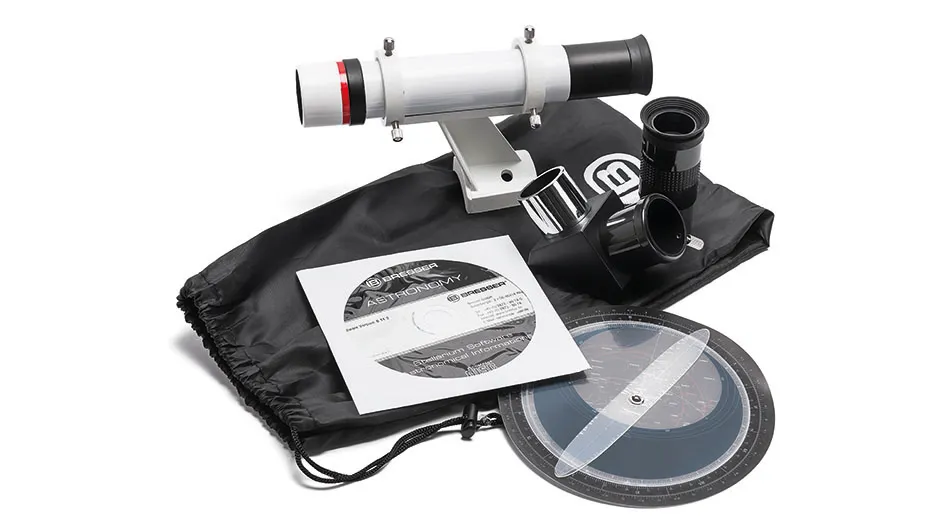
Thus emboldened, we increased the exposure length to 10 minutes, and then to 15 minutes, and the AR90/500 performed its task admirably.
In fact, over successive sessions on a variety of nights – and no matter where in the sky our target was – our imaging telescope was held accurately on target, allowing us to get on with the real business at hand: deep-sky astrophotography.
By bringing together everything you need to take astrophotography to the next level, the AR90/500 provides a cost-effective, simple answer to the question, “What do I need to start auto-guiding?”
Outstanding feature: Multi-tasking camera
In addition to its capable performance as a guiding instrument, the colour CMOS camera that comes with the kit can also operate as a lunar, planetary or even deep-sky camera.
Using a backlit, Sony IMX290 sensor with a high resolution, 2.1 megapixels (1,936x1,096 pixel) array, the camera can record video at 15fps, for lunar and planetary imaging, or individual exposures up to 16 minutes long.
It fits directly into a standard 1.25-inch eyepiece holder and includes a C-Mount extension tube.
To test the camera as a standalone instrument, we transferred it to an 11-inch SCT telescope and pointed it towards the Moon.
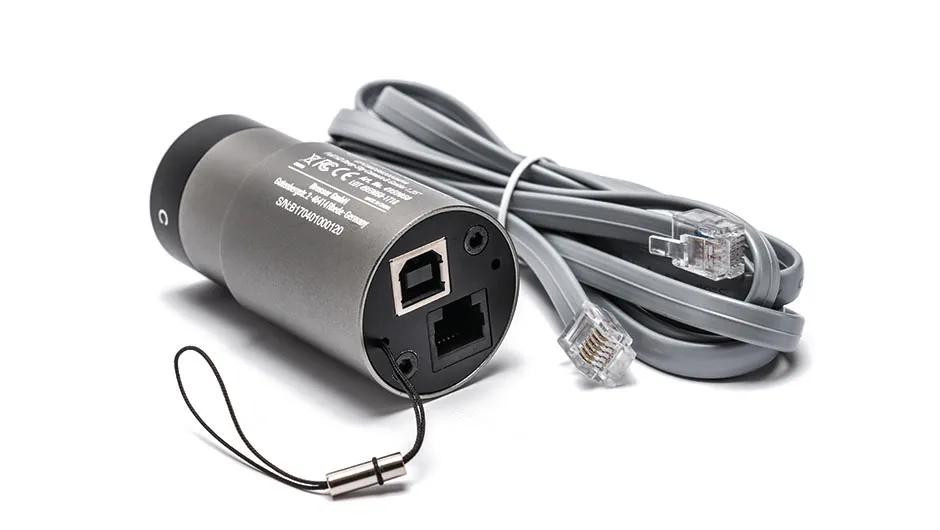
Although high in the sky, the seeing was pretty dire, but we still managed to pull out pleasing detailed on some features, including Vallis Alpes.
Dropping down to the Trapezium region in Orion, we were treated to a rich, colourful view of the nebula surrounding the star group, indicating that the camera is sensitive to both hydrogen (red) and oxygen (green/blue) wavelengths.
AR90s telescope
With a 90mm aperture, clear multi-coated achromatic optics and 500mm in focal length (f/5.5), the guide telescope provides good star images.
It incorporates graduated internal baffles for better contrast, a fixed dew shield and a rack and pinion focuser.
A 4-inch wide clamping ring holds the tube steady, helping to reduce unwanted flexure.
ST4 guide port
The rear of the guide camera includes a standard ST4 port and a cable to attach directly to a mount, which typically offers the simplest guiding option in conjunction with a computer.
Alternatively, pulse guiding removes the need for the ST4 cable, but requires extra software and possibly hardware.
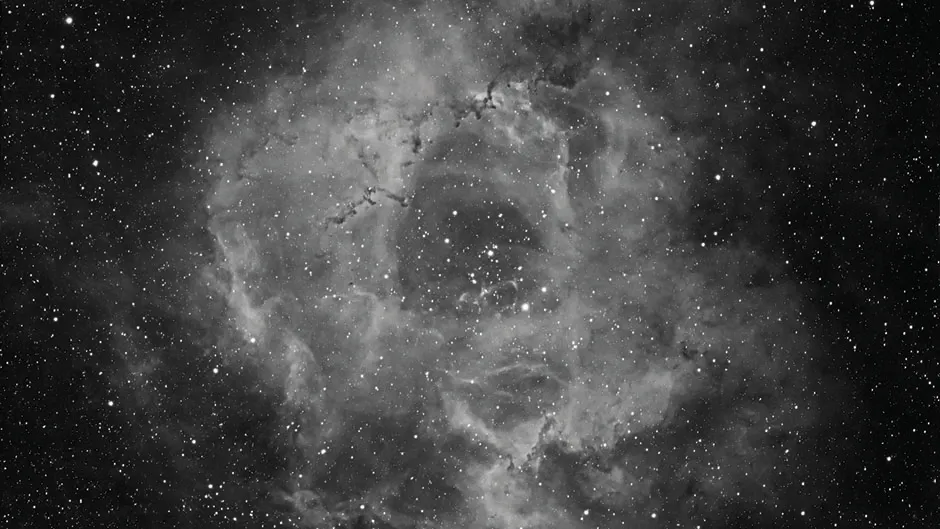
Universal clamp
Designed to attach directly to Bresser or Explore Scientific telescopes, this universal clamp has multiple fixing points, enabling it to be easily and securely bolted to a suitable bar or fixture on the main telescope.
Two fixing bolts are provided, and four of the fixing points accept ¼-20 threaded fittings.
Software bundle
ToupSky imaging software is included on the driver disk and allows full control of the CMOS camera for lunar, planetary or deep-sky imaging.
Video or Trigger mode offer numerous options, ensuring camera settings suit the target and sky conditions, along with 8- or 12-bit imaging and colour balancing.
Additional accessories
The kit also comes with a basic straight-through finderscope which attaches to the AR-90s; a 1.25-inch diagonal mirror; a 26mm Plössl eyepiece in a protective case, which we found useful while setting up and aligning the telescope; a handy telescope bag; a CD copy of Stellarium planetarium software; and even a mini planisphere.
This review originally appeared in the May 2018 issue of BBC Sky at Night Magazine
